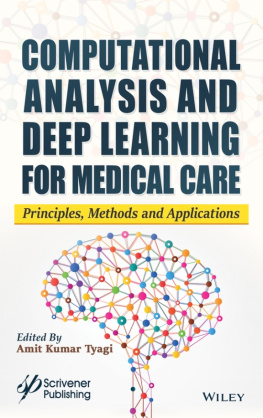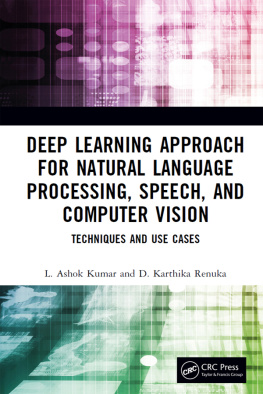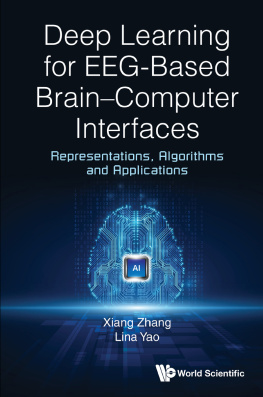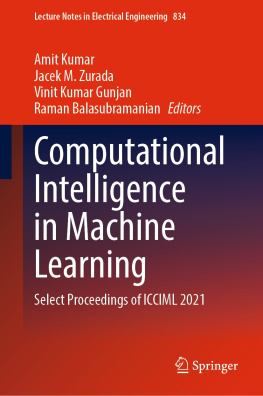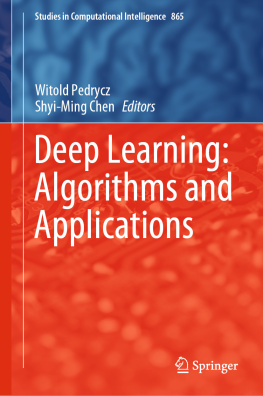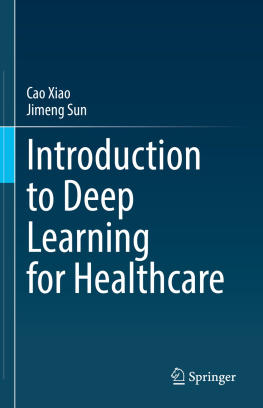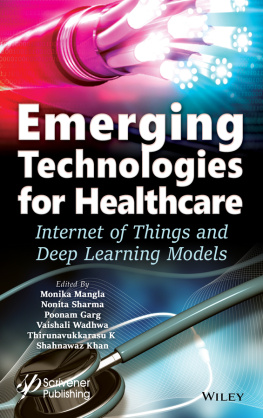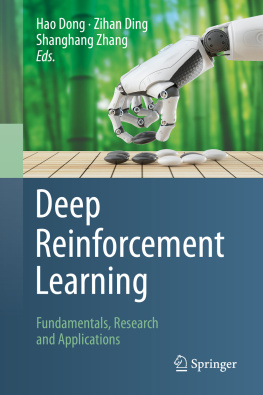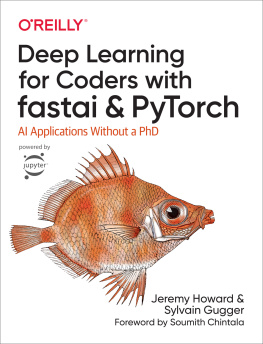Amit Kumar Tyagi (editor) - Computational Analysis and Deep Learning for Medical Care: Principles, Methods, and Applications
Here you can read online Amit Kumar Tyagi (editor) - Computational Analysis and Deep Learning for Medical Care: Principles, Methods, and Applications full text of the book (entire story) in english for free. Download pdf and epub, get meaning, cover and reviews about this ebook. year: 2021, publisher: Wiley-Scrivener, genre: Computer. Description of the work, (preface) as well as reviews are available. Best literature library LitArk.com created for fans of good reading and offers a wide selection of genres:
Romance novel
Science fiction
Adventure
Detective
Science
History
Home and family
Prose
Art
Politics
Computer
Non-fiction
Religion
Business
Children
Humor
Choose a favorite category and find really read worthwhile books. Enjoy immersion in the world of imagination, feel the emotions of the characters or learn something new for yourself, make an fascinating discovery.
- Book:Computational Analysis and Deep Learning for Medical Care: Principles, Methods, and Applications
- Author:
- Publisher:Wiley-Scrivener
- Genre:
- Year:2021
- Rating:3 / 5
- Favourites:Add to favourites
- Your mark:
Computational Analysis and Deep Learning for Medical Care: Principles, Methods, and Applications: summary, description and annotation
We offer to read an annotation, description, summary or preface (depends on what the author of the book "Computational Analysis and Deep Learning for Medical Care: Principles, Methods, and Applications" wrote himself). If you haven't found the necessary information about the book — write in the comments, we will try to find it.
The book details deep learning models like ANN, RNN, LSTM, in many industrial sectors such as transportation, healthcare, military, agriculture, with valid and effective results, which will help researchers find solutions to their deep learning research problems.
We have entered the era of smart world devices, where robots or machines are being used in most applications to solve real-world problems. These smart machines/devices reduce the burden on doctors, which in turn make their lives easier and the lives of their patients better, thereby increasing patient longevity, which is the ultimate goal of computer vision. Therefore, the goal in writing this book is to attempt to provide complete information on reliable deep learning models required for e-healthcare applications. Ways in which deep learning can enhance healthcare images or text data for making useful decisions are discussed. Also presented are reliable deep learning models, such as neural networks, convolutional neural networks, backpropagation, and recurrent neural networks, which are increasingly being used in medical image processing, including for colorization of black and white X-ray images, automatic machine translation images, object classification in photographs/images (CT scans), character or useful generation (ECG), image caption generation, etc. Hence, reliable deep learning methods for the perception or production of better results are a necessity for highly effective e-healthcare applications. Currently, the most difficult data-related problem that needs to be solved concerns the rapid increase of data occurring each day via billions of smart devices. To address the growing amount of data in healthcare applications, challenges such as not having standard tools, efficient algorithms, and a sufficient number of skilled data scientists need to be overcome. Hence, there is growing interest in investigating deep learning models and their use in e-healthcare applications.
Audience
Researchers in artificial intelligence, big data, computer science, and electronic engineering, as well as industry engineers in transportation, healthcare, biomedicine, military, agriculture.
Amit Kumar Tyagi (editor): author's other books
Who wrote Computational Analysis and Deep Learning for Medical Care: Principles, Methods, and Applications? Find out the surname, the name of the author of the book and a list of all author's works by series.

